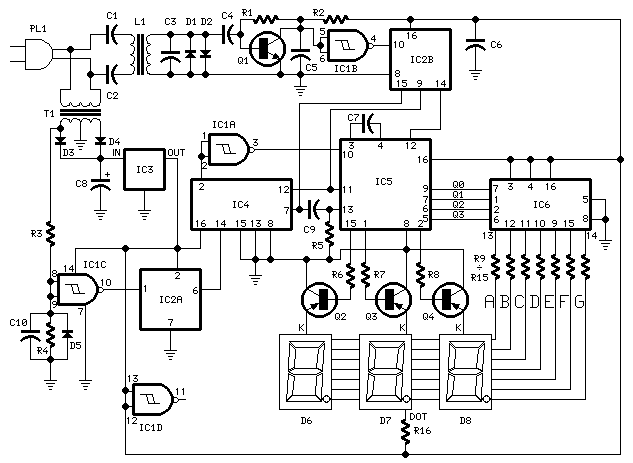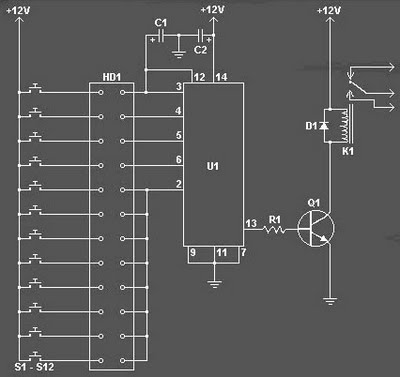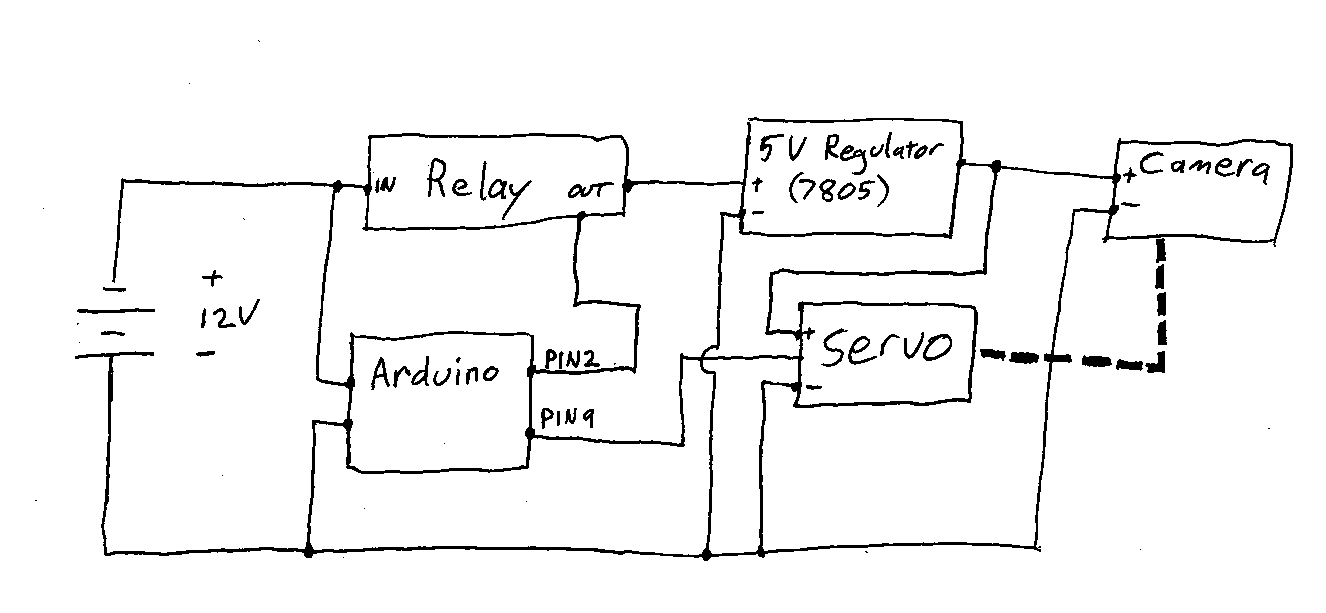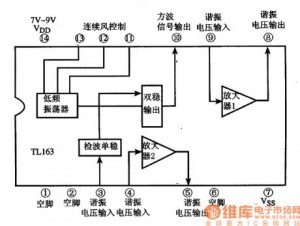
Digital Remote Thermometer

This circuit is designed for precise centigrade temperature measurement. It includes a transmitter section that converts the sensor's output voltage, which is proportional to the measured temperature, into frequency. The output frequency bursts are transmitted through the mains supply cables. The receiver section counts these bursts and displays the count on three 7-segment LED displays. The least significant digit shows tenths of a degree, resulting in a temperature range of 0.0 to 99.9 °C. IC1 serves as a precision centigrade temperature sensor with a linear output of 10mV/°C, which drives IC2, a voltage-to-frequency converter. At its output pin (3), an input of 10mV is converted into 100Hz frequency pulses. For instance, at a temperature of 20 °C, IC1 outputs 200mV, which IC2 then converts to 2KHz. Q1 acts as a driver for the power output transistor Q2, which is coupled to the mains supply through inductance L1 and capacitors C7 and C8. The frequency pulses from the mains supply, insulated by capacitors C1, C2, and inductor L1, are amplified by Q1, with diodes D1 and D2 limiting input peaks. The pulses are filtered by capacitor C5, squared by IC1B, divided by 10 in IC2B, and sent to the clock input of IC5 for final counting. IC4 functions as a time-base generator, providing reset pulses for IC1B and IC5, as well as enabling latches and gate time for IC5 at a frequency of 1Hz. It is driven by a 5Hz square wave derived from the 50Hz mains frequency picked up from the secondary of transformer T1, squared by IC1C, and divided by 10 in IC2A. IC5 controls the cathodes of the displays via transistors Q2, Q3, and Q4 at a multiplexing rate determined by capacitor C7. It also drives the parallel anodes of the three displays through the BCD-to-7 segment decoder IC6.
The circuit architecture operates on the principle of converting temperature readings into a frequency signal that can be transmitted and processed. The temperature sensor (IC1) is critical for accurate readings, providing a linear voltage output directly related to temperature changes. The voltage-to-frequency converter (IC2) enables the conversion of this output into a frequency signal suitable for transmission over the mains supply, ensuring that the measurement can be counted and displayed remotely.
The use of Q1 as a driver for Q2 allows for effective amplification of the frequency signal, ensuring that the signal remains robust even after transmission. The filtering and limiting components (C5, D1, D2) are essential for maintaining signal integrity, preventing distortion that could lead to inaccurate readings.
The counting and display mechanism is managed by IC5, which interprets the frequency pulses and translates them into a human-readable format on the 7-segment displays. The multiplexing approach, facilitated by Q2, Q3, and Q4, allows for efficient display management, ensuring that the readings are updated in real-time without flickering.
Overall, this circuit design exemplifies a sophisticated method for temperature measurement and display, utilizing frequency modulation to transmit data effectively while maintaining accuracy and reliability across its components.This circuit is intended for precision centigrade temperature measurement, with a transmitter section converting to frequency the sensor`s output voltage proportional to the measured temperature. The output frequency bursts are conveyed into the mains supply cables. The receiver section counts the bursts coming from mains supply and shows the coun ting on three 7-segment LED displays. The least significant digit displays tenths of degree and then a 00. 0 to 99. 9 G‚ °C range is obtained. IC1 is a precision centigrade temperature sensor with a linear output of 10mV/G‚ °C driving IC2, a voltage-frequency converter. At its output pin (3), an input of 10mV is converted to 100Hz frequency pulses. Thus, for example, a temperature of 20G‚ °C is converted by IC1 to 200mV and then by IC2 to 2KHz. Q1 is the driver of the power output transistor Q2, coupled to the mains supply by L1 and C7, C8. The frequency pulses coming from mains supply and safely insulated by C1, C2 & L1 are amplified by Q1; diodes D1, D2 limiting peaks at its input.
Pulses are filtered by C5, squared by IC1B, divided by 10 in IC2B and sent for the final count at the clock input of IC5. IC4 is the time-base generator: it provides reset pulses for IC1B and IC5 and enables latches and gate-time of IC5 at 1Hz frequency.
It is driven by a 5Hz square wave obtained from 50Hz mains frequency picked-up from T1 secondary, squared by IC1C and divided by 10 in IC2A. IC5 drives the displays` cathodes via Q2, Q3 & Q4 at a multiplexing rate frequency fixed by C7. It drives also the 3 displays` paralleled anodes via the BCD-to-7 segment decoder IC6. 🔗 External reference
The circuit architecture operates on the principle of converting temperature readings into a frequency signal that can be transmitted and processed. The temperature sensor (IC1) is critical for accurate readings, providing a linear voltage output directly related to temperature changes. The voltage-to-frequency converter (IC2) enables the conversion of this output into a frequency signal suitable for transmission over the mains supply, ensuring that the measurement can be counted and displayed remotely.
The use of Q1 as a driver for Q2 allows for effective amplification of the frequency signal, ensuring that the signal remains robust even after transmission. The filtering and limiting components (C5, D1, D2) are essential for maintaining signal integrity, preventing distortion that could lead to inaccurate readings.
The counting and display mechanism is managed by IC5, which interprets the frequency pulses and translates them into a human-readable format on the 7-segment displays. The multiplexing approach, facilitated by Q2, Q3, and Q4, allows for efficient display management, ensuring that the readings are updated in real-time without flickering.
Overall, this circuit design exemplifies a sophisticated method for temperature measurement and display, utilizing frequency modulation to transmit data effectively while maintaining accuracy and reliability across its components.This circuit is intended for precision centigrade temperature measurement, with a transmitter section converting to frequency the sensor`s output voltage proportional to the measured temperature. The output frequency bursts are conveyed into the mains supply cables. The receiver section counts the bursts coming from mains supply and shows the coun ting on three 7-segment LED displays. The least significant digit displays tenths of degree and then a 00. 0 to 99. 9 G‚ °C range is obtained. IC1 is a precision centigrade temperature sensor with a linear output of 10mV/G‚ °C driving IC2, a voltage-frequency converter. At its output pin (3), an input of 10mV is converted to 100Hz frequency pulses. Thus, for example, a temperature of 20G‚ °C is converted by IC1 to 200mV and then by IC2 to 2KHz. Q1 is the driver of the power output transistor Q2, coupled to the mains supply by L1 and C7, C8. The frequency pulses coming from mains supply and safely insulated by C1, C2 & L1 are amplified by Q1; diodes D1, D2 limiting peaks at its input.
Pulses are filtered by C5, squared by IC1B, divided by 10 in IC2B and sent for the final count at the clock input of IC5. IC4 is the time-base generator: it provides reset pulses for IC1B and IC5 and enables latches and gate-time of IC5 at 1Hz frequency.
It is driven by a 5Hz square wave obtained from 50Hz mains frequency picked-up from T1 secondary, squared by IC1C and divided by 10 in IC2A. IC5 drives the displays` cathodes via Q2, Q3 & Q4 at a multiplexing rate frequency fixed by C7. It drives also the 3 displays` paralleled anodes via the BCD-to-7 segment decoder IC6. 🔗 External reference





